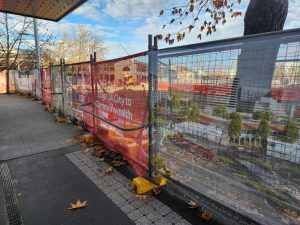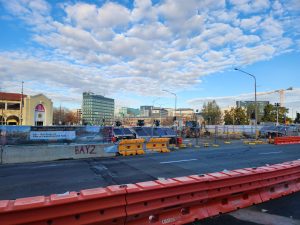Canberra Light Rail – Expression of Interest Form
The future of Canberra is being laid track by track. With the city expanding rapidly, the ACT Light Rail network has promised to be a transformative force in how people move about the capital. Designed to connect workers, families, communities, and tourists safely and reliably, this modern transport solution is projected to carry up to 39,000 passengers daily in the years to come.
The newest installation, Light Rail Stage 2A, will extend the current line 1.7km from Alinga Street to Commonwealth Park, following London Circuit West. On paper, this is a promising development aimed at revitalising the city centre and boosting local business engagement. But the reality on the ground tells a more complicated story one of disruption, financial loss, and insufficient government support.
Since construction began earlier this year, road closures and traffic diversions have become the norm for Canberra’s city centre. In February 2025, London Circuit West was closed between Northbourne Avenue and Edinburgh Avenue. Then, in March, the disruption expanded eastward. Sections of the London Circuit East were blocked to motorists and cyclists between Northbourne Avenue and Theatre Lane, with fencing expected to remain until late 2026. Pedestrian access has been maintained, but the overall impact on accessibility is undeniable.
For local businesses, these disruptions haven’t just been inconvenient, they’ve been devastating. Exorbitant rents, public liability insurance, and declining foot traffic have placed immense financial pressure on small business owners.
The ACT Government’s response has been to announce a targeted business support package, unveiled on 12 May 2025. This includes free parking after 5:30pm Wednesday to Sunday, waivers for outdoor dining permit fees, additional security cameras, and promotional advertising to encourage foot traffic. While well-intentioned, the support appears largely symbolic.
Free parking during off-peak hours does little to support businesses that operate between 9 am and 5 pm, when most of the revenue-generating activity occurs. Waiving a $2,000 annual permit fee offers minimal relief to businesses losing tens of thousands each month. And promotional campaigns, however well-designed, cannot mask the very real deterrent of fencing, construction noise, and reduced accessibility.
This situation feels all too familiar. Sydney’s light rail project, marred by years of delays and business losses, stands as a cautionary tale. And yet, here in Canberra, history appears to be repeating itself, with the same slow government response and underwhelming compensation measures.
It’s not too late to correct course. The ACT Government must acknowledge the real economic impact on local traders and develop a more comprehensive support strategy. That means direct financial assistance, practical solutions to increase daytime foot traffic, and clearer, more transparent communication.
Progress often comes at a cost. But if that cost is the survival of Canberra’s small businesses, then we must ask ourselves: are we truly building a better city, or simply paving over the very communities that make it thrive?
Do Canberrans have any recourse at law?
Canberrans affected by the Light Rail project may have recourse against the ACT Government in a ‘private nuisance’ claim. In assessing the viability of such a claim, it is important to note current class action proceedings against the department responsible for the Sydney Light Rail, for similar disruptions, Transport for NSW.
Hunt Leather Pty Ltd v Transport for NSW (Case nos S20 & S21/2025) and any forthcoming decision in the High Court in that matter should offer valuable guidance for Canberra businesses considering any similar action against the ACT Government.
If you and your business have been significantly affected by the ACT Light Rail Project, contact Adero Law today, who are currently exploring a potential class action on the subject matter.


